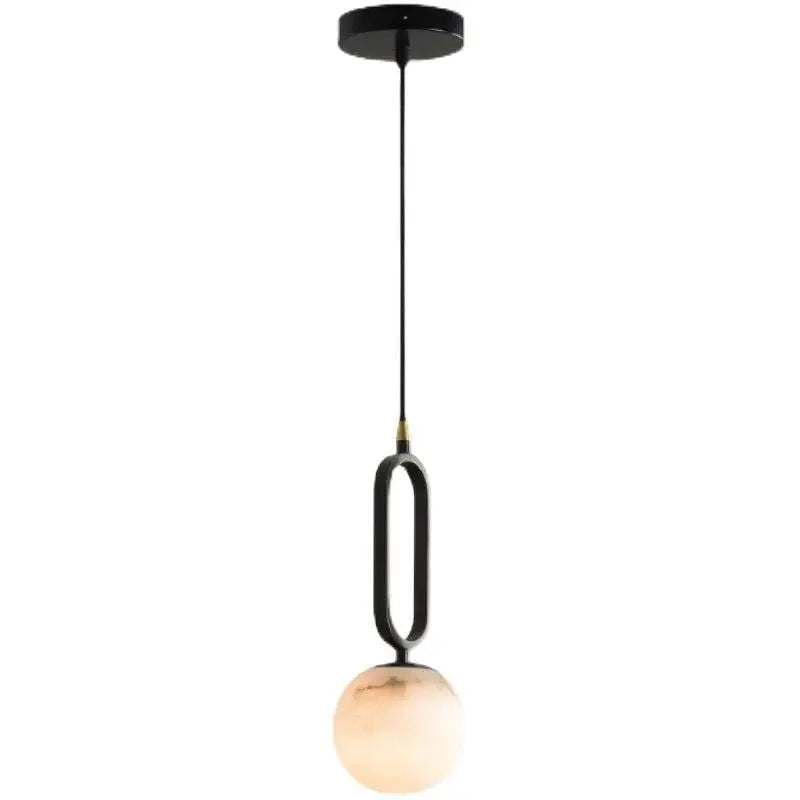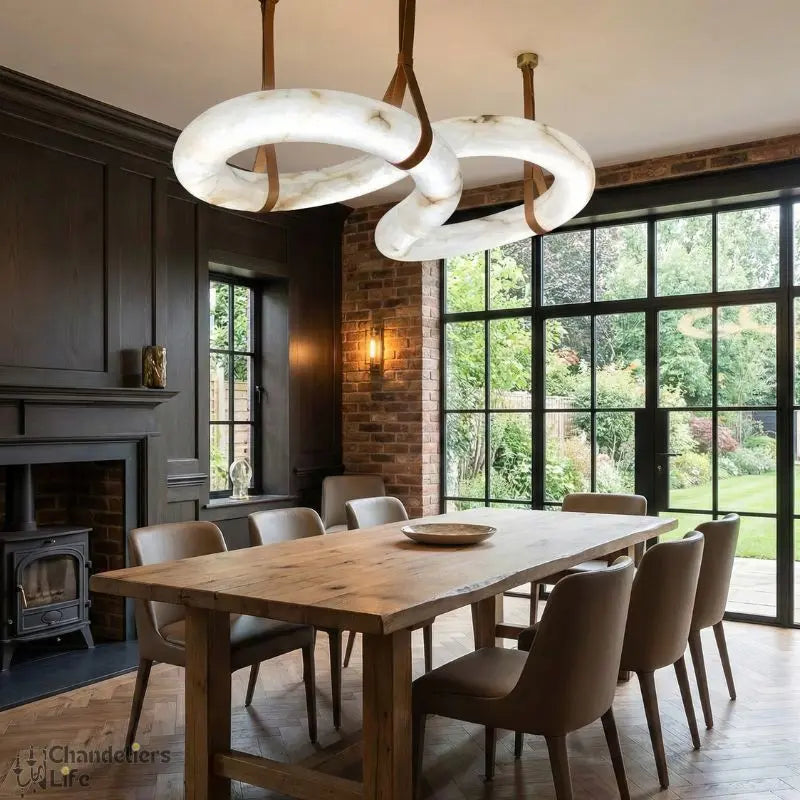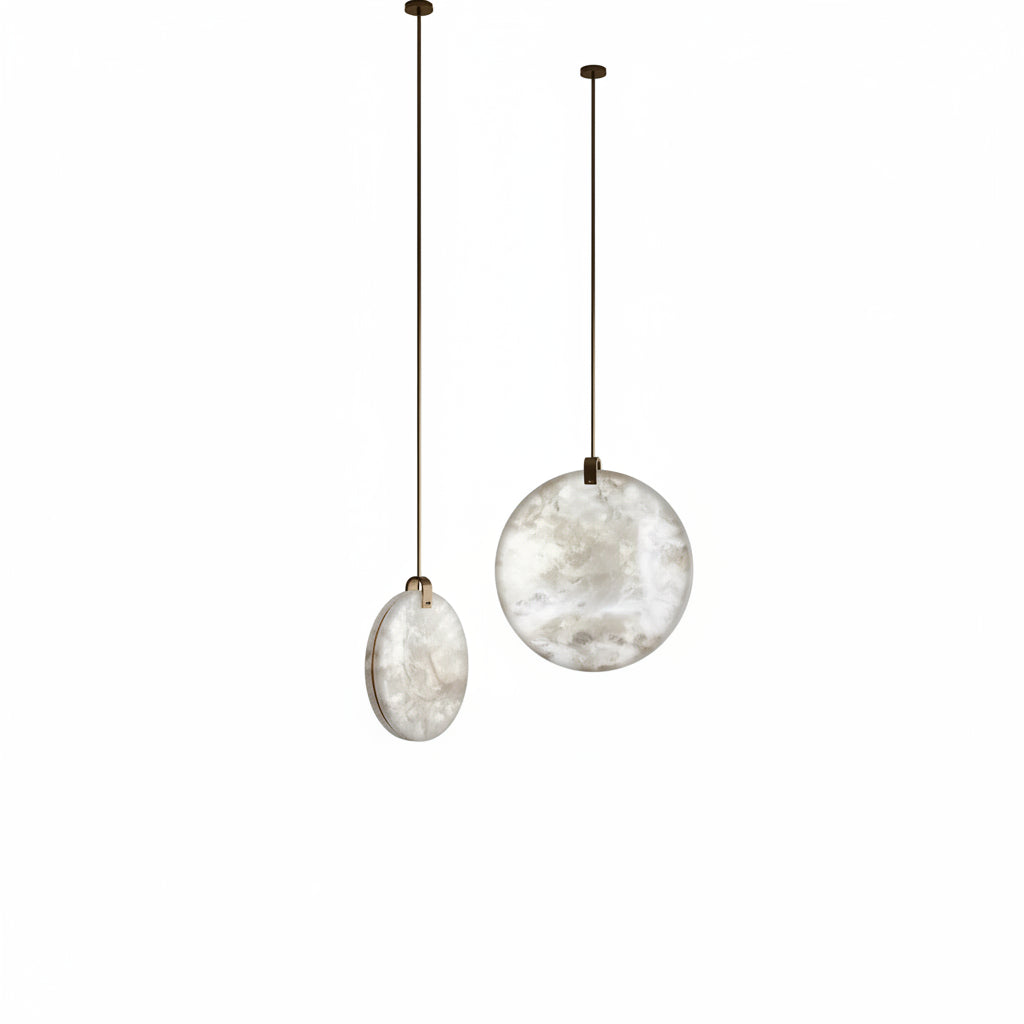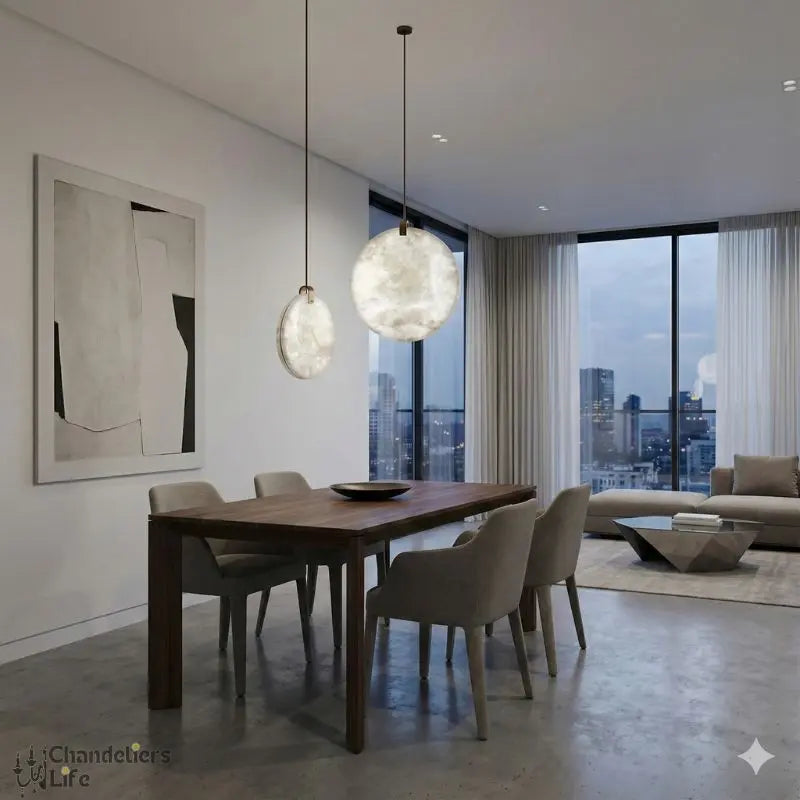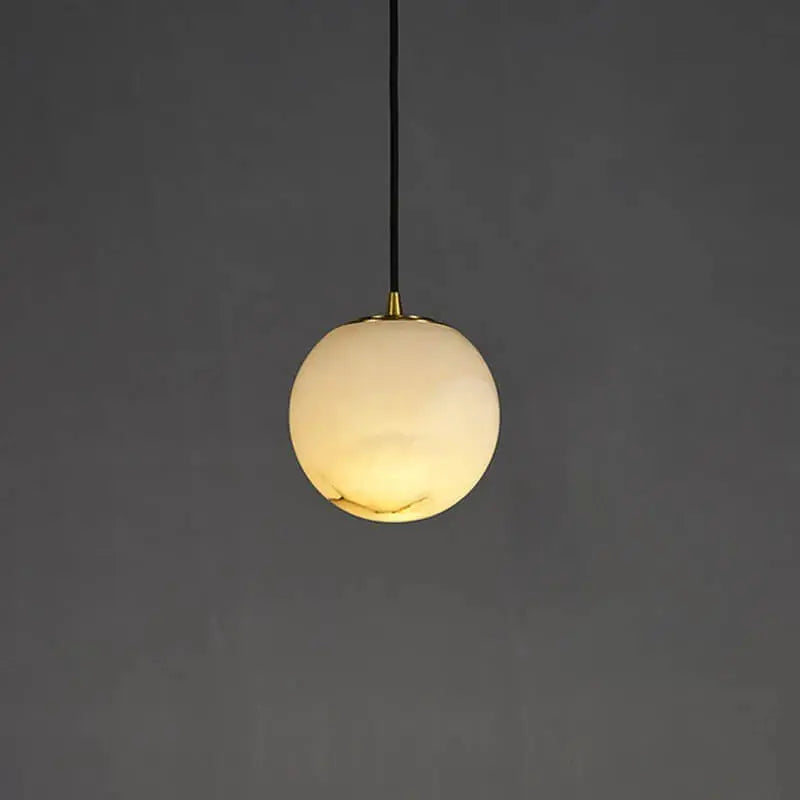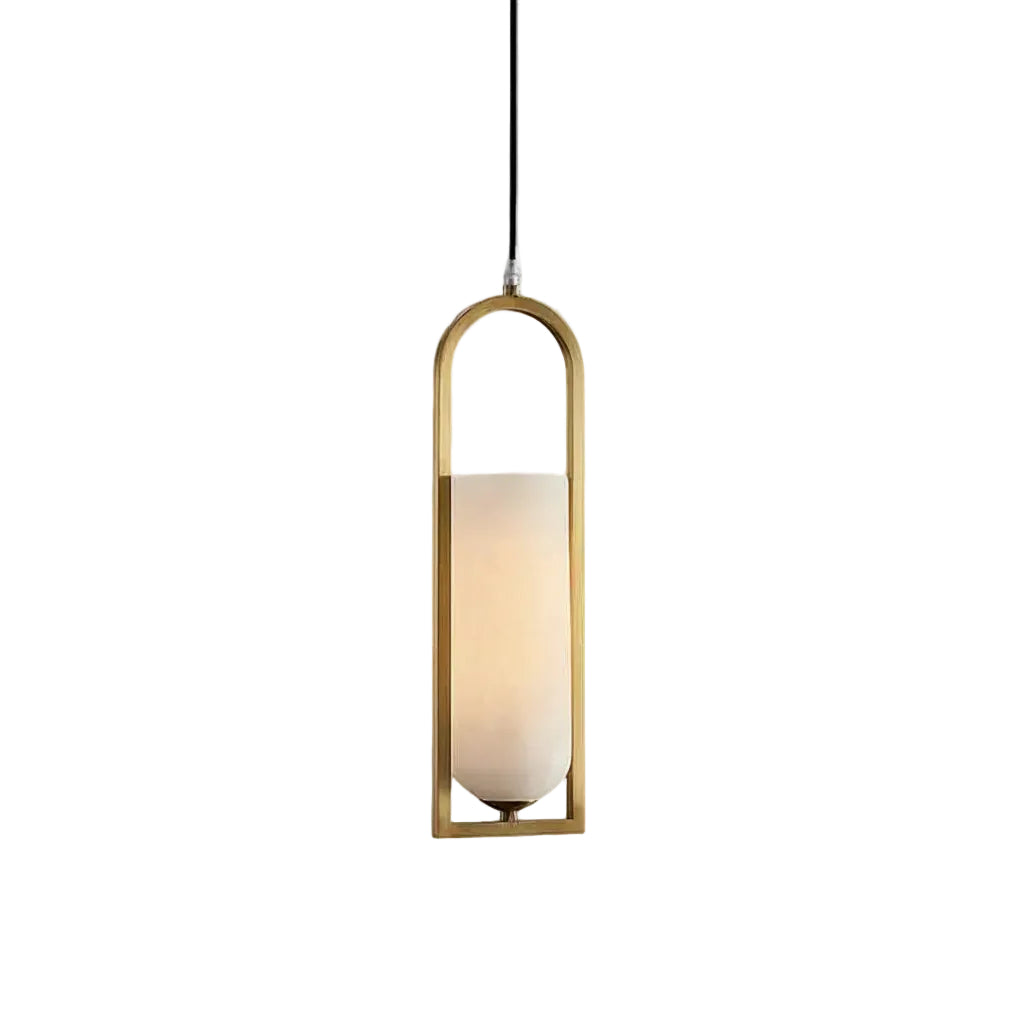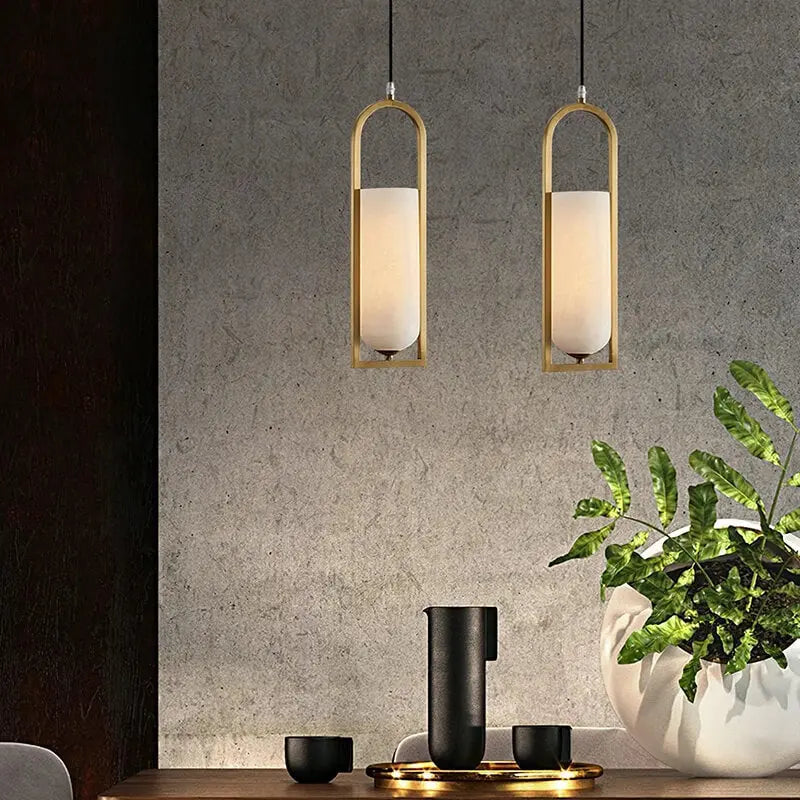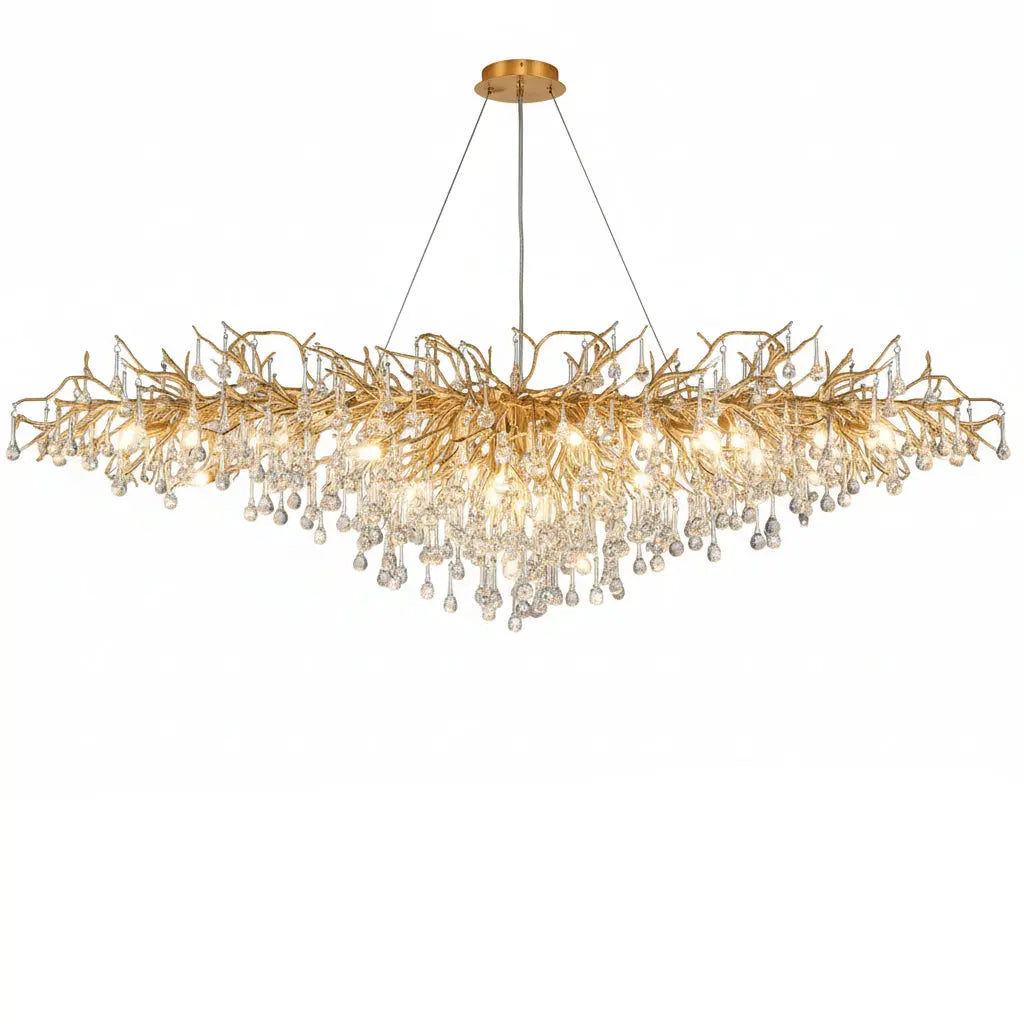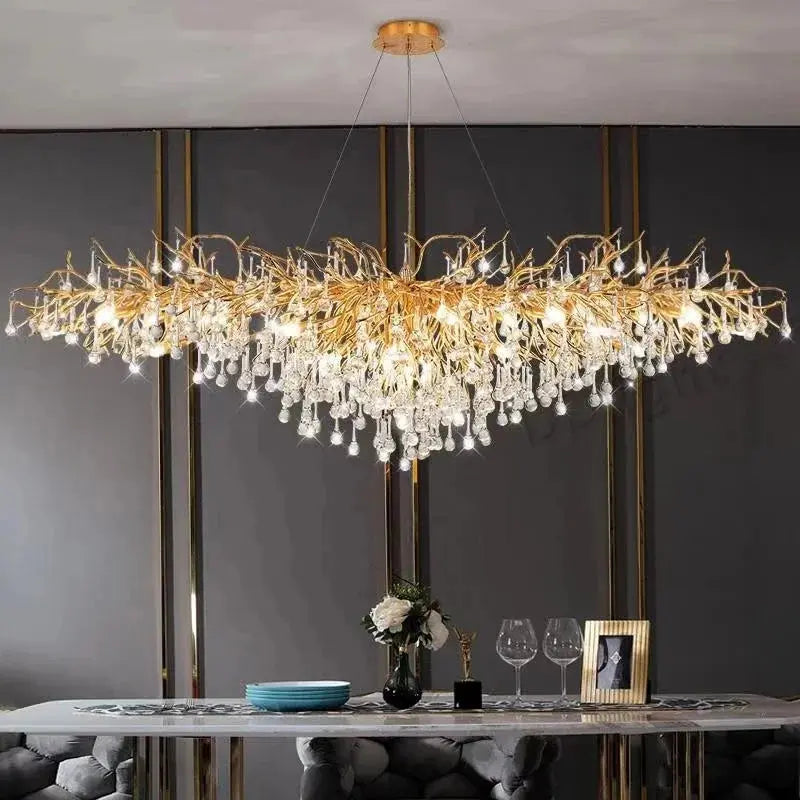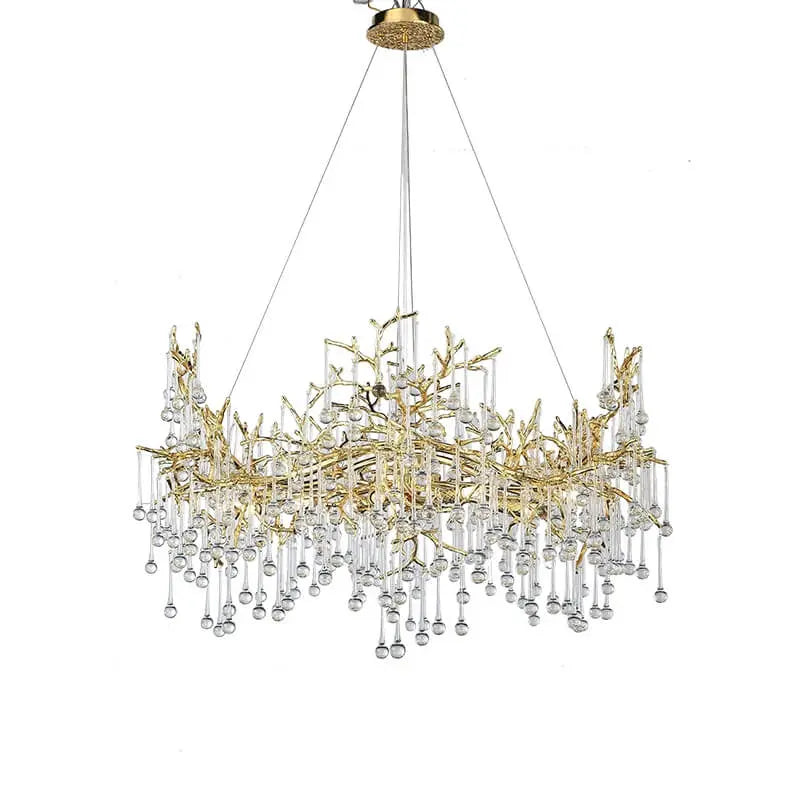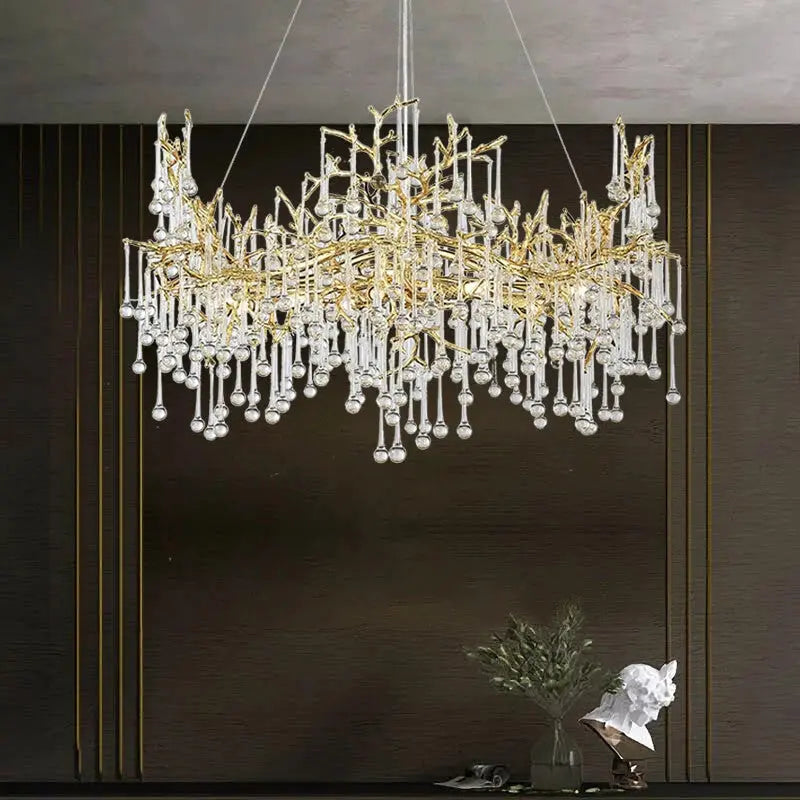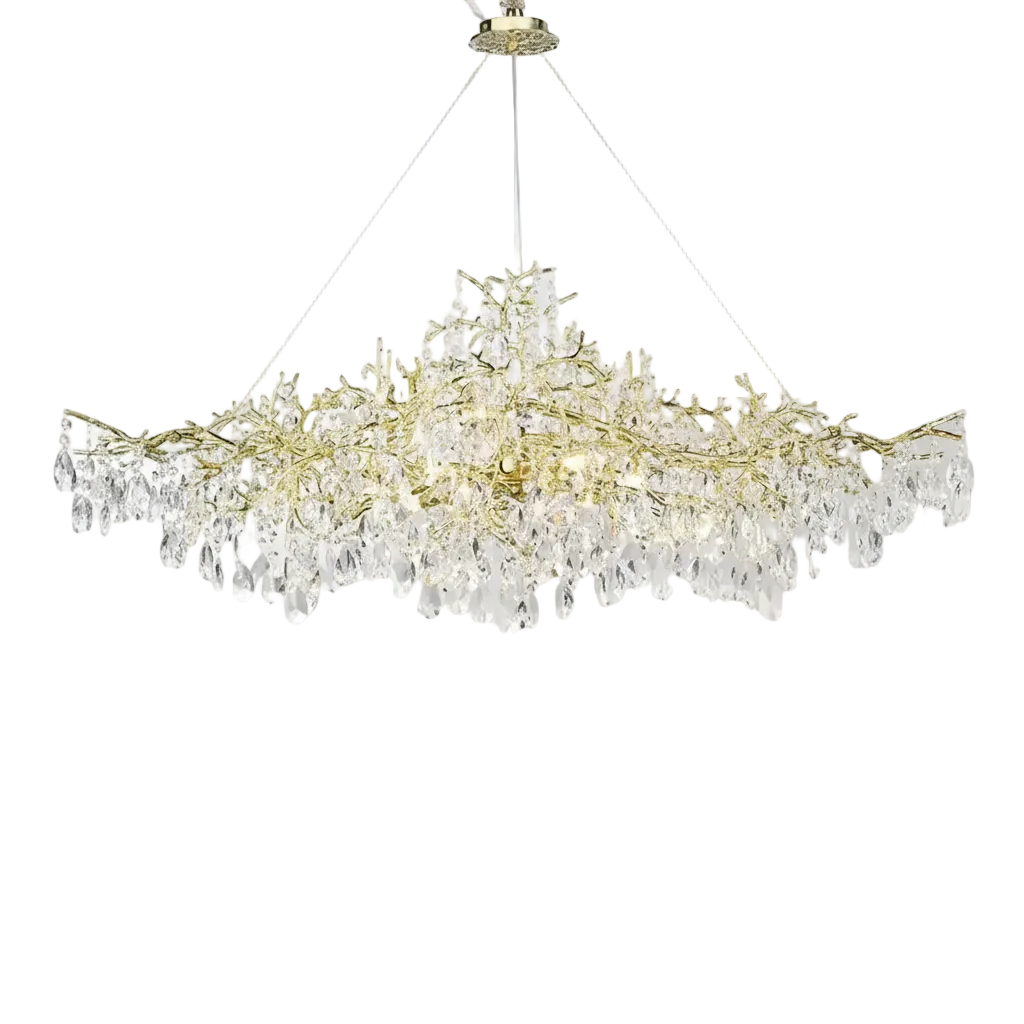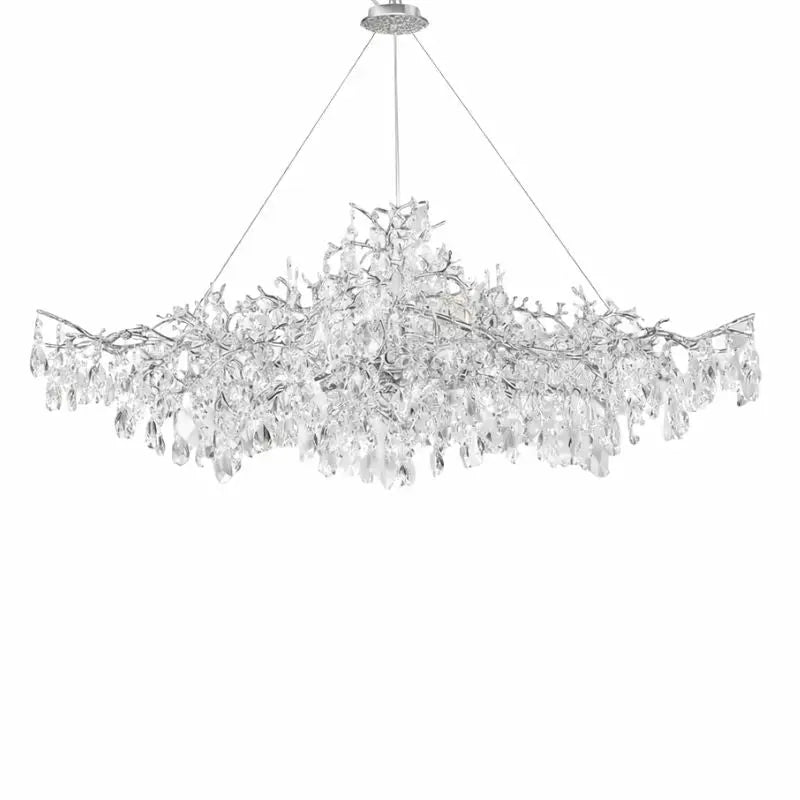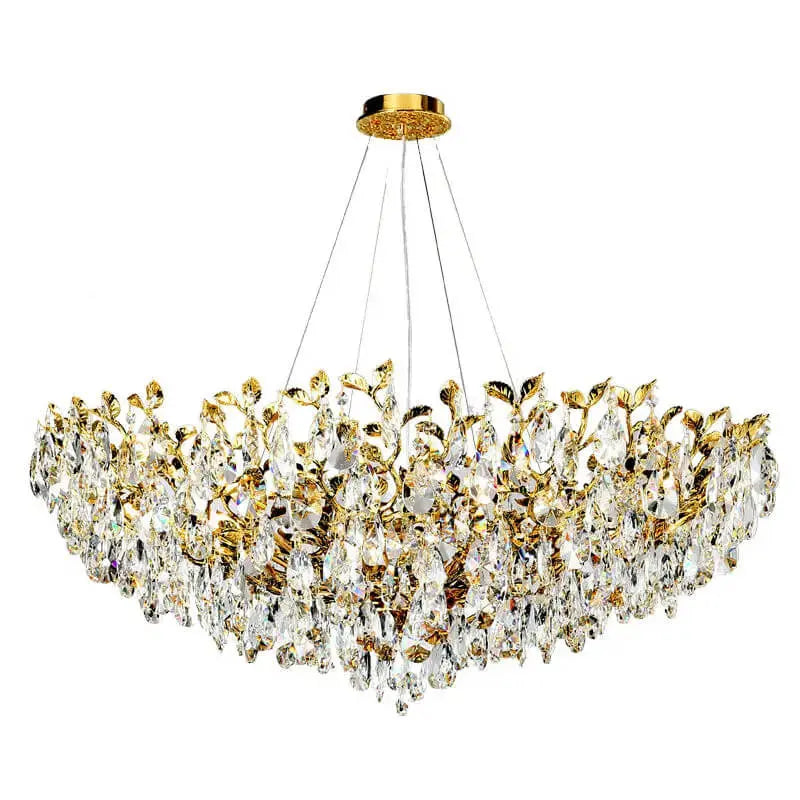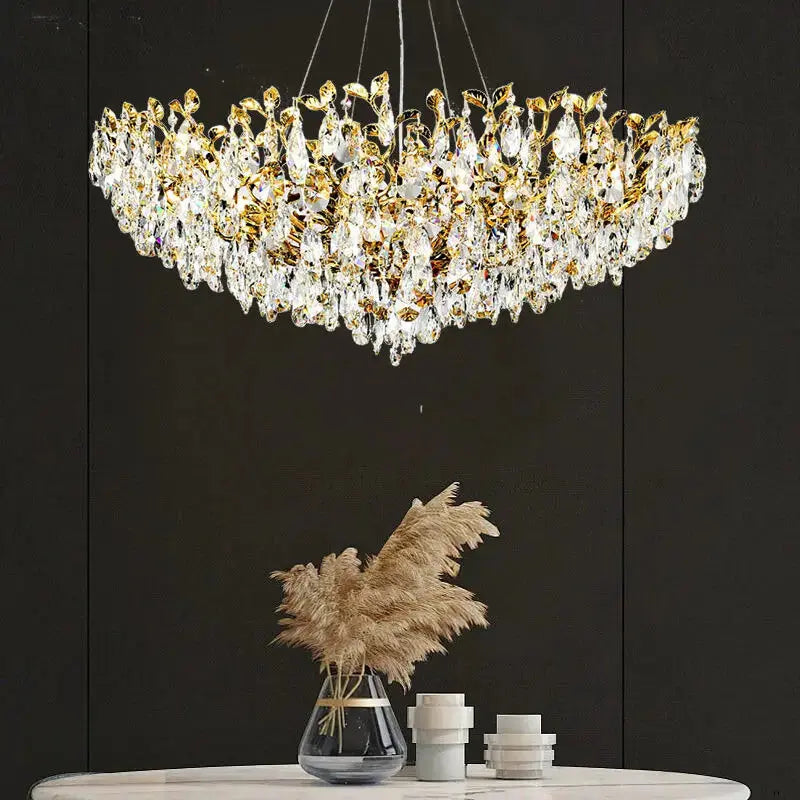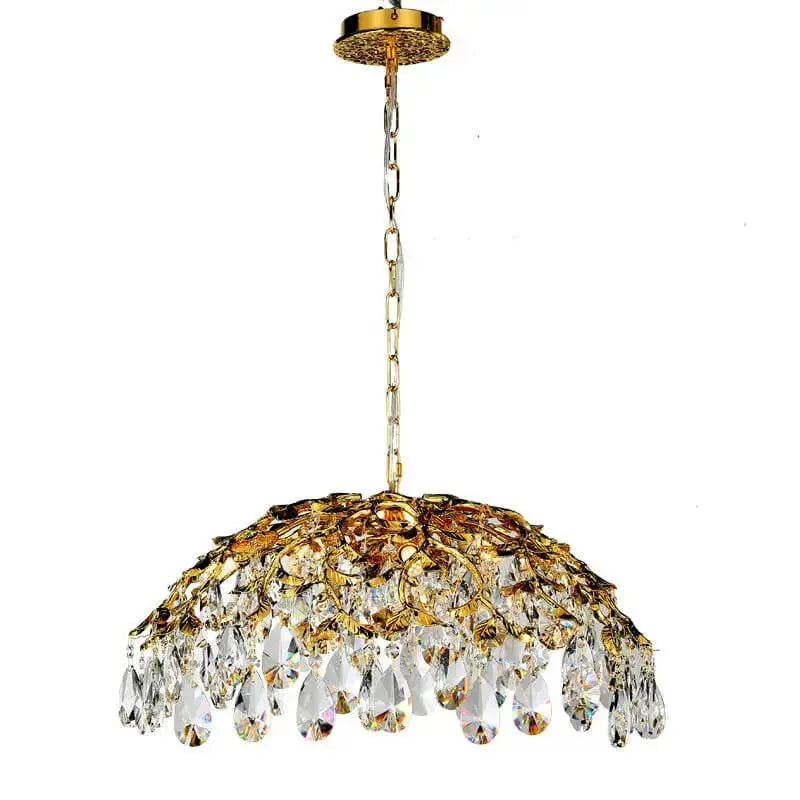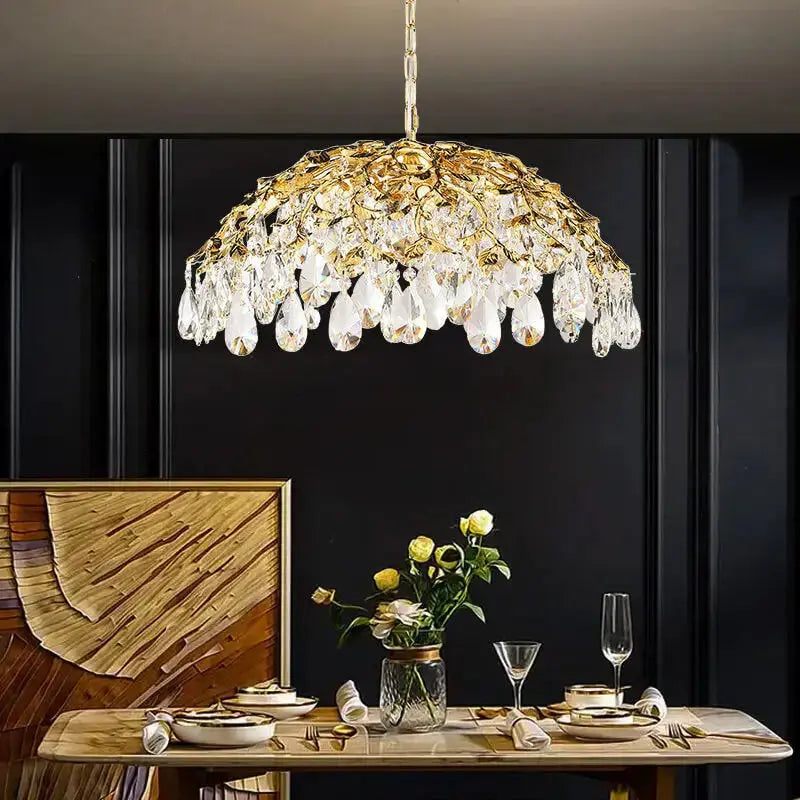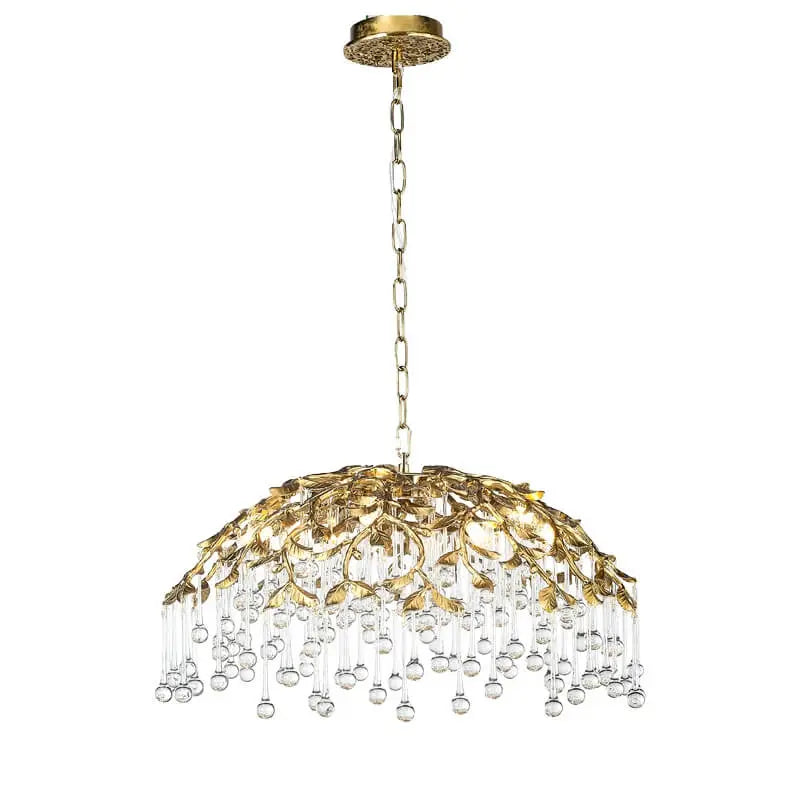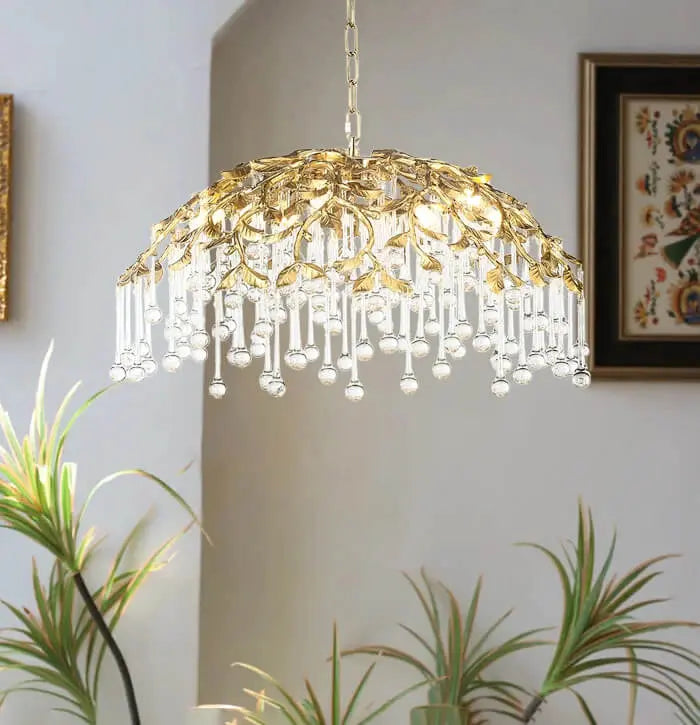Lighting is a key part of home design, affecting both the look and feel of a space. Modern contemporary lighting has changed a lot over time, taking on new styles and using new technology. In this article, we will explore how modern lighting has evolved, the main features of contemporary lighting, and how it can change different rooms in your home. We'll also look at how to pick the right fixtures, the benefits of energy-efficient options, and how lighting can set the mood in your home.
Key Takeaways
- Modern lighting has evolved from simple fixtures to complex designs influenced by history and technology.
- Key features of contemporary lighting include minimalist designs, smart technology, and varied material choices.
- Different rooms in a home benefit from specific lighting solutions tailored to their unique needs.
- Choosing the right light fixtures involves understanding your style, balancing looks with function, and knowing popular types.
- Energy-efficient lighting options like LEDs and smart systems can save money and help the environment.
The Evolution of Modern Contemporary Lighting
Historical Context and Influences
Modern contemporary lighting has come a long way from its early beginnings. Initially, lighting was purely functional, but over time, it has evolved into a key element of interior design. The shift from candles and oil lamps to electric lighting marked a significant turning point. This change not only improved illumination but also opened up new possibilities for design and aesthetics.
Technological Advancements
The development of new technologies has played a crucial role in the evolution of lighting. The invention of the incandescent bulb was a game-changer, but it didn't stop there. Today, we have LED lights, which are more energy-efficient and longer-lasting. Smart lighting systems have also emerged, allowing homeowners to control their lighting through apps and voice commands. These advancements have made it easier to create customized lighting solutions that enhance both functionality and ambiance.
Design Trends Over the Decades
Lighting design has seen many trends over the years. In the mid-20th century, minimalist designs became popular, focusing on clean lines and simple forms. This trend has continued to influence modern contemporary lighting, with an emphasis on sleek and unobtrusive fixtures. More recently, there has been a move towards incorporating natural materials and finishes, such as wood and metal, to create a warm and inviting atmosphere. The integration of smart technology has also become a significant trend, offering both convenience and energy efficiency.
Key Elements of Modern Contemporary Lighting
Modern contemporary lighting is a blend of style, technology, and functionality. It plays a crucial role in defining the ambiance and aesthetic of a home. Here are the key elements that make up this lighting style:
Minimalist Design Principles
Minimalist living room decor often features clean lines and simple forms. The idea is to create a space that feels open and uncluttered. Lighting fixtures in this style are usually sleek and understated, focusing on functionality without sacrificing elegance.
Material Choices and Finishes
The materials and finishes used in modern contemporary lighting are diverse. Common choices include metals like brushed nickel or matte black, as well as glass and even wood. These materials not only add to the visual appeal but also contribute to the durability and functionality of the fixtures.
Integration of Smart Technology
One of the most exciting aspects of modern lighting is the integration of smart technology. Many contemporary fixtures come with app-controlled features, allowing homeowners to adjust brightness, color temperature, and even light patterns. This fusion of technology and design enhances both the functionality and the overall experience of the space.
Impact on Different Spaces in the Home
Living Room Lighting Solutions
The living room is often the heart of the home, where families gather and guests are entertained. Choosing the right lighting can transform this space into a warm and inviting area. Consider using a mix of ambient, task, and accent lighting to create a balanced atmosphere. For example, a captivating chandelier or pendant light can serve as a stunning focal point, while table lamps and floor lamps provide additional layers of light. Don't forget to explore different living room color schemes to complement your lighting choices.
Kitchen and Dining Area Innovations
In the kitchen and dining areas, lighting plays a crucial role in both functionality and ambiance. Pendant lights over the kitchen island or dining table not only provide necessary illumination but also add a touch of style. Under-cabinet lighting is perfect for task lighting, ensuring that your countertops are well-lit for cooking and food preparation. For a modern touch, consider integrating smart lighting systems that allow you to adjust the brightness and color temperature to suit different occasions.
Bedroom and Bathroom Lighting Ideas
Bedrooms and bathrooms require thoughtful lighting solutions to create a relaxing and functional environment. In the bedroom, consider using a combination of overhead lighting, bedside lamps, and accent lights to create a cozy and inviting space. DIY wall decor for the bedroom can be highlighted with strategically placed accent lights. In the bathroom, proper lighting around the vanity is essential for grooming tasks. Consider using LED lights for their energy efficiency and long lifespan. Additionally, incorporating dimmable lights can help create a spa-like atmosphere for relaxation.
Lighting can significantly impact the mood and functionality of different spaces in your home. By carefully selecting and placing various types of lighting, you can enhance the overall design and ambiance of each room.
Choosing the Right Fixtures for Your Style
Understanding Your Design Aesthetic
When picking lighting fixtures, it's important to match them with your room's style. Whether you love boho chic home decor or lean towards an industrial style home decor, your lights should fit in. Think about how the fixture's shape, color, and material will blend with your existing decor. For example, a sleek, modern lamp might not work well in a room filled with vintage home decor trends.
Balancing Form and Function
Your lighting should not only look good but also serve its purpose. In a farmhouse kitchen decor, you might want a fixture that provides ample light for cooking while also adding a rustic charm. On the other hand, in a small bathroom, you need a light that is both bright and space-saving. Affordable kitchen decor ideas often include multi-functional fixtures that offer both style and practicality.
Popular Fixture Types and Their Uses
Different rooms need different types of lighting. Here are some popular options:
- Chandeliers: Great for dining rooms and entryways. They add a touch of elegance and can be a focal point.
- Pendant Lights: Perfect for kitchen islands and small dining rooms. They provide focused light and come in various styles.
- Floor Lamps: Ideal for living rooms and bedrooms. They offer flexibility and can be moved around easily.
- Wall Sconces: Good for hallways and bathrooms. They save space and add a decorative element.
Choosing the right light fixture is like picking the perfect accessory for an outfit. It should complement the room and enhance its overall look.
Remember, the right lighting can transform your space, making it more inviting and functional. Whether you're into boho bedroom decor or looking for apartment balcony decor ideas, there's a fixture out there that will fit your style perfectly.
Sustainable and Energy-Efficient Lighting Options
Benefits of LED Lighting
LED bulbs are a game-changer in modern lighting. They use much less energy than traditional incandescent bulbs and last much longer. This means you save money on your energy bills and reduce waste. LED bulbs come in different colors and brightness levels, making them perfect for any room.
Incorporating Natural Light
Using natural light is a great way to save energy. Large windows, skylights, and reflective surfaces can help bring more sunlight into your home. This reduces the need for artificial lighting during the day, which is good for the environment and your wallet.
Smart Lighting Systems for Energy Savings
Smart lighting systems let you control your lights with your phone or voice. You can set schedules so lights turn off when not needed, saving energy. Motion sensors can also help by turning lights on and off based on room occupancy.
Making small changes in your lighting can have a big impact on the environment. Consider these eco-friendly home decor ideas to make your home more sustainable.
The Role of Lighting in Enhancing Mood and Ambiance
Color Temperature and Its Effects
Lighting isn't just about making a room bright; it can change how we feel. Color temperature is a big part of this. Warm lights, like those with a yellow hue, make us feel cozy and relaxed. On the other hand, cool lights, which are more blue, help us stay alert and focused. Here's a quick look at how different color temperatures affect us:
| Color Temperature (Kelvin) | Effect on Mood |
|---|---|
| 2700K - 3000K | Cozy and Relaxing |
| 3500K - 4100K | Neutral and Balanced |
| 5000K - 6500K | Alert and Focused |
Creating Cozy and Inviting Spaces
To make a room feel inviting, use soft, warm lighting. This type of light is perfect for living rooms and bedrooms where you want to relax. You can use table lamps, floor lamps, or even bamboo lamps to add a touch of natural beauty and warmth. Layering different light sources can also help create a cozy atmosphere.
A well-lit room can make you feel welcome and comfortable, encouraging you to spend more time there.
Lighting for Productivity and Focus
In spaces where you need to work or study, bright and cool lighting is best. This type of light helps you stay awake and concentrate better. Use desk lamps or overhead lights with cool tones in your home office or study area. Balancing the right amount of light can make a big difference in how productive you are.
By understanding how different types of lighting affect our mood and productivity, we can create spaces that not only look good but also make us feel our best.
Practical Tips for Integrating Modern Contemporary Lighting
Layering Different Types of Lighting
Layering different types of lighting—ambient, task, and accent—ensures that each room area is adequately lit while contributing to the overall design. For example, in a living room, you might use a chandelier for ambient lighting, table lamps for task lighting, and wall sconces to highlight artwork.
Using Dimmers and Controls
Using dimmers and adjustable fixtures allows you to control the intensity of light, creating versatile settings for various activities and moods. Dimmers can be especially useful in rooms that serve multiple purposes, such as living rooms and bedrooms.
Strategic Placement for Maximum Impact
The placement of lighting fixtures is crucial in achieving the desired effect. Consider the function of each area and place lights accordingly. For instance, task lighting should be positioned directly over workspaces, while accent lighting should be directed toward the features you want to highlight.
Bold formatting and italic formatting can be used to emphasize key points.
Scandinavian Home Decor Inspiration
Scandinavian home decor inspiration often features minimalist lighting designs that emphasize functionality and simplicity. This style is perfect for creating a clean, uncluttered look in your home.
Modern Farmhouse Kitchen Decor
Modern farmhouse kitchen decor combines rustic charm with contemporary elements. Consider using pendant lights or chandeliers to add a touch of elegance to your kitchen.
Minimalist Home Office Decor
Minimalist home office decor focuses on creating a clutter-free, productive environment. Use sleek, modern lighting fixtures to enhance the overall aesthetic and provide adequate illumination for work tasks.
Brighten up your home with modern contemporary lighting! Discover practical tips to seamlessly integrate stylish lighting into any room. From sleek pendant lights to elegant chandeliers, we have everything you need to transform your space. Ready to get started? Visit our website for more inspiration and exclusive offers!
Conclusion
Modern contemporary lighting has revolutionized home design, making it more than just a necessity. It shapes the mood, enhances the beauty, and adds functionality to our living spaces. From sleek chandeliers to smart lighting systems, the options are endless and exciting. By choosing the right lighting, you can transform any room into a cozy, stylish, and efficient space. Remember, good lighting is not just about brightness; it's about creating the perfect ambiance that suits your lifestyle. So, explore the possibilities and let your home shine in the best light possible.
Frequently Asked Questions
What is modern contemporary lighting?
Modern contemporary lighting features sleek, minimalist designs that often use new technology like LEDs and smart systems. It focuses on clean lines and functional beauty.
How has lighting design changed over the years?
Lighting design has shifted from decorative and ornate fixtures to more streamlined and functional pieces. Advances in technology, like LEDs and smart controls, have also played a big role.
What are the benefits of LED lighting?
LED lights are energy-efficient, last a long time, and are available in various colors and brightness levels. They are better for the environment and can save you money on energy bills.
How can I choose the right light fixtures for my home?
First, understand your design style. Look for fixtures that balance form and function. Consider the room's size and the type of lighting you need, like ambient, task, or accent lighting.
Why is layered lighting important?
Layered lighting uses different types of lights, like ambient, task, and accent lighting, to create a balanced and functional space. It helps highlight features and provides the right light for various activities.
What is the role of lighting in setting the mood of a room?
Lighting affects the room's mood by influencing its brightness and color temperature. Warm lights can make a space feel cozy, while cooler lights can make it feel more energetic and focused.




